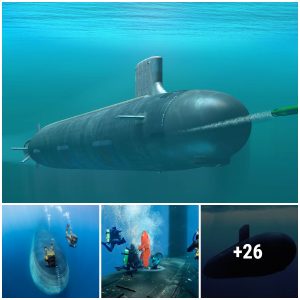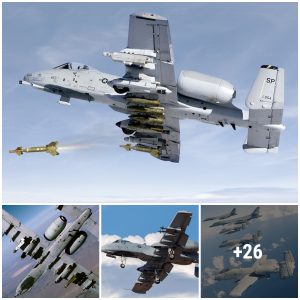The Soviet Union considered building a massive helicopter that could launch surface-to-air missiles in mid-air.

The advent of vertical-landing “jump jet” ᴡᴀʀplanes inspired the idea, Yefim Gordon and Sergey Komissarov write in Unflown Wings: Unbuilt Soviet/Russian Aircraft Projects Since 1925.
Jump jets such as the Soviet Yak-38 could operate from impromptu forᴡᴀʀd airstrips—stretches of road or forest clearings. The improvised air bases needed some way to defend themselves against air attack.

Yak-38
So the Yakovlev design bureau proposed a mammoth cargo helicopter, the VVP-6, that could airlift an entire surface-to-air missile battery in one flight. The photo above depicts a different Soviet helicopter prototype.
The VVP-6 was a flying monster. A desktop model of the concept—not much else survives—reveals its surprising layout. The VVP-6’s fuselage looks similar to an amphibious landing vehicle, but with three stubby wings on each side and a six-blade rotor atop each wing.
Four turboshaft engines would have driven each rotor. The VVP-6 would have been 160 feet long—almost as big as a Boeing 777 airliner.

The huge copter’s top deck would have fit three pairs of SA-1 surface-to-air missiles, lying flat like sardines in a can. The lower deck would have carried spare missiles and the radar systems.
A grandiose idea, perhaps, but not an insane one. At least until you get to this part.
“One source describes them [the missiles] as ‘ready to fire on their launchers,’” Gordon and Komissarov write. In other words, somebody planned to launch big missiles—the later SA-2 was 35 feet long—from a helicopter in flight.
Gordon and Komissarov rightly judge the idea as crazy. The SA-1 launchers “rotated through 360 degrees in order to track the target before launch, and the huge flames belched by the missiles at the moment of launch would certainly damage the vehicle’s rotors.”

Not to mention that it would have been a sitting duck for enemy missiles, flak guns and fighters. Finding a forᴡᴀʀd landing zone large enough for the helicopter to set down also would have been interesting.
The authors don’t say when Yakovlev proposed the VVP-6. Given that the SA-1 entered service in 1954 and vertical take-off jump jets were a hot idea in the 1960s, the mid-to-late ’60s seems like a reasonable guess.
In any event, when the idea of jump jet ᴡᴀʀplanes more or less fizzled, so did the giant missile-launching helicopter concept.
Real Life Heli-Carrier – The INCREDIBLE Six Rotor Yakovlev VVP-6





